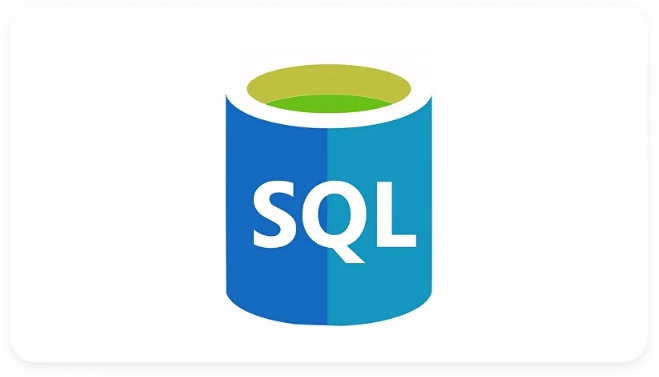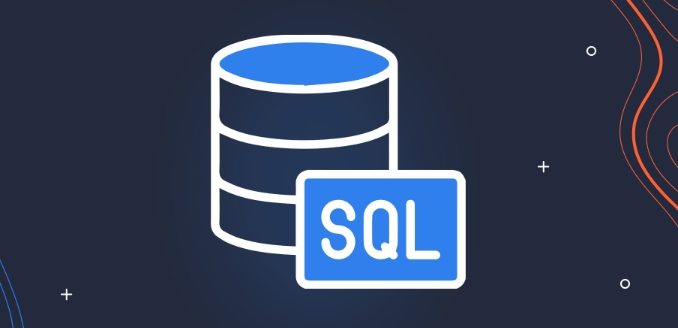SQL中的何處和有子句之間有什麼區別?
WHERE和HAVING的主要區別在於過濾時機:1.WHERE在分組前過濾行,作用於原始數據,不能使用聚合函數;2.HAVING在分組後過濾結果,作用於聚合後的數據,可以使用聚合函數。例如查詢中先用WHERE篩選高薪員工再分組統計,再用HAVING篩選平均薪資超6萬的部門時,兩者順序不可調換,WHERE始終先執行,確保僅符合條件的行參與分組,HAVING則根據分組結果進一步過濾最終輸出。

The difference between WHERE and HAVING in SQL comes down to when each filter is applied — especially in relation to grouping. In short:

-
WHEREfilters rows before they are grouped. -
HAVINGfilters groups or aggregated results after the grouping is done.
If you're using GROUP BY , that's where this distinction really matters.

Filtering Before Grouping with WHERE
Use WHERE when you want to narrow down which rows go into the grouping process. It works on individual rows, not aggregated values.
For example:

SELECT department, COUNT(*) AS employee_count FROM employees WHERE salary > 50000 GROUP BY department;
Here, only employees earning more than $50k are included before the database groups them by department. The filtering happens early, so it affects the final counts.
You can't use aggregate functions like COUNT() , SUM() , etc., in a WHERE clause — because those values don't exist yet at that stage of the query.
Key points:
- Filters raw data.
- Cannot reference aggregate functions.
- Runs before grouping.
Filtering After Grouping with HAVING
Once you've grouped your data using GROUP BY , you might want to filter based on the result of an aggregation — that's where HAVING steps in.
Example:
SELECT department, COUNT(*) AS employee_count FROM employees GROUP BY department HAVING COUNT(*) > 10;
This query returns only departments with more than 10 employees. The count is calculated first, then filtered.
Unlike WHERE , HAVING can include aggregate functions. You can also reference column aliases defined in the SELECT .
Common uses:
- Filter based on group size (
COUNT,SUM, etc.) - Compare aggregated values (eg,
HAVING AVG(salary) > 60000) - Use with or without
GROUP BY
When to Use Which?
To decide between WHERE and HAVING , ask yourself:
- Do I need to filter individual rows before grouping? → Use
WHERE. - Do I need to filter groups or aggregated results after grouping? → Use
HAVING.
Sometimes both can be used together:
SELECT department, AVG(salary) AS avg_salary FROM employees WHERE status = 'active' GROUP BY department HAVING AVG(salary) > 60000;
In this case:
-
WHEREnarrows the dataset to active employees only. -
HAVINGfurther filters the resulting groups to show only those with an average salary over $60k.
So basically, it's about timing: WHERE filters early, HAVING filters late — especially useful after aggregations.
以上是SQL中的何處和有子句之間有什麼區別?的詳細內容。更多資訊請關注PHP中文網其他相關文章!

熱AI工具

Undress AI Tool
免費脫衣圖片

Undresser.AI Undress
人工智慧驅動的應用程序,用於創建逼真的裸體照片

AI Clothes Remover
用於從照片中去除衣服的線上人工智慧工具。

Stock Market GPT
人工智慧支援投資研究,做出更明智的決策

熱門文章

熱工具

記事本++7.3.1
好用且免費的程式碼編輯器

SublimeText3漢化版
中文版,非常好用

禪工作室 13.0.1
強大的PHP整合開發環境

Dreamweaver CS6
視覺化網頁開發工具

SublimeText3 Mac版
神級程式碼編輯軟體(SublimeText3)
 了解SQL執行上下文和權限
Aug 16, 2025 am 08:57 AM
了解SQL執行上下文和權限
Aug 16, 2025 am 08:57 AM
SQL執行上下文是指運行SQL語句時的身份或角色,決定能訪問哪些資源及操作權限。權限設置應遵循最小權限原則,常見權限包括SELECT、INSERT、EXECUTE等。排查權限問題需確認登錄名、角色權限、EXECUTEAS設置及schema授權。執行上下文切換可通過EXECUTEAS實現,但需注意用戶存在性、權限授予及性能安全影響。建議避免隨意賦予db_owner或sysadmin角色,應用賬號應僅訪問必要對象,並通過schema統一授權。
 如何在SQL中加入桌子
Aug 16, 2025 am 09:37 AM
如何在SQL中加入桌子
Aug 16, 2025 am 09:37 AM
Aself-joinisusedtocomparerowswithinthesametable,suchasinhierarchicaldatalikeemployee-managerrelationships,bytreatingthetableastwoseparateinstancesusingaliases,asdemonstratedwhenlistingemployeesalongsidetheirmanagers'nameswithaLEFTJOINtoincludetop-lev
 如何在SQL中使用完整的外部連接?
Aug 17, 2025 am 12:25 AM
如何在SQL中使用完整的外部連接?
Aug 17, 2025 am 12:25 AM
AFULLOUTERJOINreturnsallrowsfrombothtables,withNULLswherenomatchexists;1)Itcombinesmatchingrecordsandincludesunmatchedrowsfrombothleftandrighttables;2)Itisusefulfordatareconciliation,mergereports,andidentifyingmismatches;3)Notalldatabasessupportitnat
 如何在甲骨文中找到第二高薪
Aug 19, 2025 am 11:43 AM
如何在甲骨文中找到第二高薪
Aug 19, 2025 am 11:43 AM
要找到Oracle中第二高的薪水,最常用的方法有:1.使用ROW_NUMBER()或RANK(),其中ROW_NUMBER()為每行分配唯一序號,適合獲取第二行數據,而RANK()在處理並列時會跳過後續排名;2.使用MAX()和子查詢,通過SELECTMAX(salary)FROMemployeesWHEREsalary
 從SQL數據庫遷移到MongoDB:挑戰和解決方案
Aug 16, 2025 pm 01:40 PM
從SQL數據庫遷移到MongoDB:挑戰和解決方案
Aug 16, 2025 pm 01:40 PM
變換DatamodelsbyembeddingorReferencingBasedInAccessPatternsInSteadeDusise joins; 2.HandletleTransactionsByFairingAtomicoperations andEventualConsistimency,reservingMulti-documentTransactionsforrictionsforrications for for for foreverality casse; 3.ewredRiteSqlqueriessqlqueriesSusiessusitusingAggregregregregregationpipipelinetsinea
 如何在SQL中找到並殺死阻塞過程?
Aug 18, 2025 am 04:36 AM
如何在SQL中找到並殺死阻塞過程?
Aug 18, 2025 am 04:36 AM
useys.dm_exec_requestsandssp_who2toIdentifytheblockingProcessByCheckingBlocking_Session_Session_idandtheblkbyColumn; 2.querysys.dm_exe c_sessionswithsys.dm_exec_sql_textTogetDetailslikeLogInNeameAnnamansDsqlTextextoftheBlockingSession; 3.ExecuteKillTototerMinateTheBlocking
 如何通過SQL中的結果迭代
Aug 14, 2025 pm 12:19 PM
如何通過SQL中的結果迭代
Aug 14, 2025 pm 12:19 PM
SQLdoesnotsupportdirectiterationlikeprocedurallanguages,butyoucanprocessrowsusingalternativemethods:1.Useset-basedoperationsforefficient,scalableupdates(e.g.,UPDATEemployeesSETsalary=salary*1.1WHEREdepartment='Engineering');2.Usecursorsforrow-by-rowp
 如何計算SQL出生日期的年齡
Aug 22, 2025 pm 01:16 PM
如何計算SQL出生日期的年齡
Aug 22, 2025 pm 01:16 PM
tocalculateagefromadateofbirthinsql,使用的atabase-spifificFunctionStocuncomputearlySbetweentheentheentheentheenthdateandcurrentdate:inmys QL,Usetimestampdiff(年,Dob,curdate()); inpostgresql,useExtract(yeustromage(current_date,dob)); insqlserver,二數








